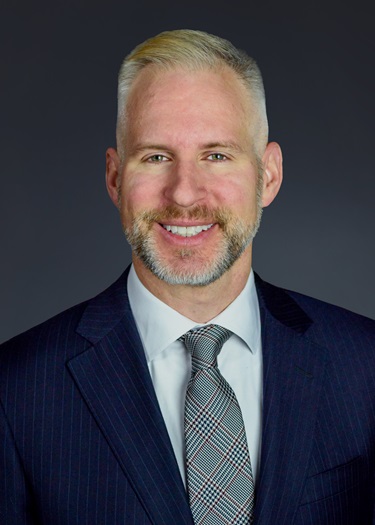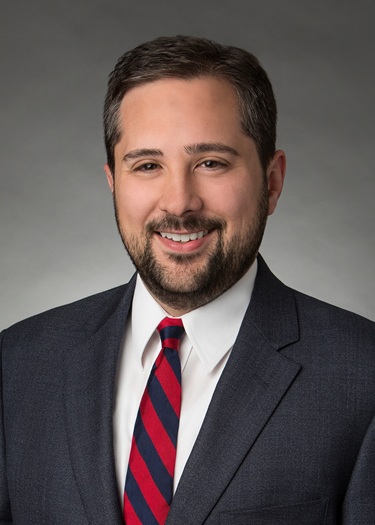Banking and Financial Services Update
U.S. Court of Appeals for the Third Circuit Affirms Securitization Trusts Subject to CFPB Investigative and Enforcement Powers
On March 19, 2024, a three-judge panel of the U.S. Court of Appeals for the Third Circuit (Third Circuit) in CFPB v. National Collegiate Master Student Loan Trust held that each of 15 related trusts (the Trusts) was a “covered person” under the Consumer Financial Protection Act (CFPA) because the Trusts “engaged” in providing a consumer financial product or service.1 As covered persons, the Trusts are subject to the investigative and enforcement powers of the Consumer Financial Protection Bureau (CFPB). The decision increases the risk that the CFPB and other regulators may pursue investigations and enforcement actions against securitization vehicles. The Third Circuit, however, drew an important distinction between the issues of whether a securitization vehicle is subject to the CFPB’s jurisdiction and whether it is liable for the actions of its servicers and sub-servicers, deciding the former but reserving judgment on the latter.
To the extent the Third Circuit’s decision remains binding legal precedent, we anticipate securitization transaction parties will respond to the decision by scrutinizing, and potentially modifying, certain provisions in trust agreements, servicing agreements, and other related securitization documents.
Case History
As part of an investigation into certain student loan collections practices, the CFPB on September 4, 2014 issued civil investigative demands to the Trusts.2 The CFPB’s investigation focused on the collections practices of a sub-servicer to the Trusts.3 Similar to allegations against certain servicers during the mortgage crisis of the late 2000s, the sub-servicer was alleged to have regularly executed and notarized affidavits where the executing employee lacked personal knowledge of the representations therein, falsely provided testimony in court regarding the same, and filed collections lawsuits while lacking the necessary documentation for the complete chain of assignment and applicable promissory notes.4 The CFPB’s investigation into the collections practices of the sub-servicer was on the heels of a uniquely disruptive period for the administration of the Trusts that included the bankruptcy of the guarantor of the underlying loans and the resignation of the special servicer that preceded the alleged actions of the sub-servicer.5
On September 18, 2017, the CFPB settled with the sub-servicer.6 The same day, the CFPB announced a proposed settlement with the Trusts and filed a civil action in the U.S. District Court for the District of Delaware (District Court) against the Trusts.7 A number of parties related to the administration of the Trusts and certain noteholders intervened in the matter and objected to the proposed settlement.8 The District Court rejected the proposed settlement on the basis that the law firm that purported to represent the Trusts in the enforcement action with the CFPB did not in fact have such authority.9 As a result, the parties litigated the matter.
In 2020 and 2021, several of the intervenors filed motions to dismiss.10 In deciding the motions to dismiss, the District Court primarily considered two potential grounds: (i) that the Trusts are not covered persons under the CFPA and (ii) that the lawsuit was not properly ratified by the CFPB following the U.S. Supreme Court’s decision in Seila Law LLC v. Consumer Financial Protection Bureau, which found that the CFPB’s then single-Director structure was unconstitutional.11 The District Court denied the motions, finding that the Trusts were covered persons under the CFPA and that ratification was unnecessary.12
The Trusts promptly appealed those particular decisions to the Third Circuit on an interlocutory basis.13 The Third Circuit upheld the decision of the District Court on both grounds.14 The case will be remanded to the District Court unless the Trusts appeal.
Decision That Securitization Trusts Are Covered Persons Under the CFPA
In deciding that the Trusts are “covered persons” under the CFPA, the Third Circuit’s decision principally hinged on the issue of what it means to “engage” in a consumer financial product or service.15 The Third Circuit broadly defined the term “engage” to mean to be “occupied, employed, or involved in [something]” or “to begin and carry on an enterprise or activity” or “to do or to take part in something” or “to employ or involve one’s self, to take part in, [or] to embark on [something].”16 Applying this broad definition, the Third Circuit held that various activities of the Trusts qualify as engaging in providing a consumer financial product or service, notwithstanding the fact that securitization trusts have no employees or directors.17 Under the Third Circuit’s reasoning, any one of these activities standing on its own would be sufficient for the Trusts to be considered a covered person under the CFPA.18 The relevant activities cited by the Third Circuit were:
- Acquiring pools of credit assets, which the Third Circuit held is beginning an enterprise or activity involving a consumer financial product or service;19
- Entering into administration agreements with an administrator that contemplated filing collections lawsuits with respect to the credit assets, which the Third Circuit held is carrying on an enterprise that involves consumer financial products and services;20
- Entering into servicing agreements for the servicing of credit assets through the Administrator of the Trusts, which the Third Circuit held constituted the Trusts carrying on an enterprise that involved consumer financial products or services;21 and
- Taking part in other activities pursuant to the trust agreements for the Trusts, including retaining title to credit assets while collection suits were brought against the related borrowers, which the Third Circuit held caused the Trusts to be involved in collecting debts on consumer products and services as the collection suits were on behalf of the Trusts.22
As a result, the Third Circuit held that the Trusts are subject to the CFPB’s investigative and enforcement powers.23
If the Third Circuit’s decision is not overturned on appeal, it increases the risk that the CFPB, or another regulator, could directly sue or investigate a securitization vehicle and subject the securitization vehicle to: the cost of defending such suit or investigation; civil money penalties; injunctive relief; and other forms of equitable relief.24 States also have authority under the federal CFPA to bring claims, and both state and federal agencies have enforcement powers under other statutes that might be applicable.25 We also note that while private plaintiffs do not have a right to bring an action under the CFPA, they do have the ability to bring civil actions under state law equivalents, and the decision could lead to an increased risk of direct private actions against securitization vehicles under these state law equivalents.
While securitization vehicles have generally been exposed to the risk that an enforcement action against an originator or servicer could affect the terms of the underlying credit assets or how they are serviced, the risk of needing to defend a direct suit or investigation, or the direct imposition of a civil money penalty or injunctive relief, is generally new for securitization vehicles. To date, enforcement actions, investigations, and lawsuits by regulators against securitization vehicles for violations of consumer credit laws and regulations have been rare.26 As a consequence, any future enforcement activity with respect to securitization vehicles is likely to raise a range of novel legal, operational, and strategic issues that will require sophisticated securitization, enforcement, and regulatory counsel to successfully navigate.
Distinction Between Regulatory Jurisdiction Over Securitization Vehicles and Liability for Actions of Servicer or Sub-servicer
While the Third Circuit held that the Trusts are covered persons under the CFPA, the Court noted in an important footnote that whether a securitization trust is ultimately liable for the acts of its servicers and sub-servicers is “an entirely different matter” than whether a securitization trust is subject to the CFPB’s investigative and enforcement powers.27 In making that distinction, the Third Circuit did not elaborate on the circumstances under which a securitization trust would be liable for the actions of its servicers and sub-servicers.
To the extent the issue of liability is further litigated, the CFPB or another regulator may attempt to establish that a securitization vehicle is liable for the actions of servicers and sub-servicers, or another third party that supports the securitization vehicle, on the basis of the principles of agency and apparent authority. This line of argument is previewed in the briefing filed by the CFPB before the Third Circuit.28 The CFPB and other regulators could also attempt to reframe these arguments and instead allege that the manner in which a securitization vehicle engaged and oversaw its servicers and sub-servicers directly resulted in a violation of applicable law. Given the unique factual circumstances concerning the management of the Trusts and the fact that to date actions against securitization vehicles have been rare, it remains to be seen to what degree there is further litigation against securitization vehicles and what judicial precedent may be set concerning the proper standard for when the acts of servicers and sub-servicers give rise to direct liability for securitization vehicles. It is an issue that should be monitored.
Implications for Securitization Transactions
We anticipate that securitization transaction parties will respond to the decision by scrutinizing and potentially making modifications to transaction structures and certain provisions in securitization documents, including organizational documents for securitization vehicles and servicing agreements in order to distinguish their facts from those considered by the Third Circuit in its decision. We express no view as to whether such changes would of themselves result in a different legal outcome.
Additionally, indemnification provisions in servicing and administration agreements may receive increased scrutiny by transaction parties as a result of the decision. We also anticipate that transaction parties will focus on notice covenants with respect to regulatory actions and inquires and terms in securitization documents related to the process for responding to any investigation or lawsuit affecting the securitization vehicle, including what party will have decision-making authority and who will bear the costs of such response.
1 Consumer Fin. Prot. Bureau vs. Nat’l Collegiate Master Student Loan Tr., No. 22-1864, 2024 WL 1165116, at *10 (3rd Cir. March 19, 2024).
2 Consumer Fin. Prot. Bureau vs. Nat’l Collegiate Master Student Loan Tr., C.A. No. 17-1323 (MN), 2021 WL 1169029 at *2 (D. Del. March 26, 2021).
3 See Transworld Systems, Inc., CFPB No. 2017-CFPB-2018 (Sep. 18, 2017); Complaint, Consumer Fin. Prot. Bureau vs. Nat’l Collegiate Master Student Loan Tr., 575 F.Supp.3d 505 (D. Del. 2021) (No. 17-cv-01323-UNA), ECF. No. 1.
4 Transworld Systems, Inc., CFPB No. 2017-CFPB-2018 (Sep. 18, 2017).
5 See John Flowers, First Marblehead Tumbles On Insurer’s Bankruptcy, WALL STREET JOURNAL, April 8, 2008, https://www.wsj.com/articles/SB120766552701797981; and The First Marblehead Corp., Current Report (Form 8-K) (May 11, 2016), https://www.sec.gov/Archives/edgar/data/1262279/000119312516590578/d180561d8k.htm (disclosing the receipt of a Notice and Opportunity to Respond and Advise letter from the CFPB, which may occur before the filing of an enforcement action by the CFPB).
6 Transworld Systems, Inc., CFPB No. 2017-CFPB-2018 (Sep. 18, 2017).
7 Consumer Fin. Prot. Bureau vs. Nat’l Collegiate Master Student Loan Tr., C.A. No. 17-1323 (MN), 2021 WL 1169029 at *2 (D. Del. March 26, 2021).
8 Consumer Fin. Prot. Bureau vs. Nat’l Collegiate Master Student Loan Tr., No. 17-cv-01323-UNA (D. Del. Oct. 19, 2018) (memorandum opinion denying motion to intervene); Consumer Fin. Prot. Bureau vs. Nat’l Collegiate Master Student Loan Tr., No. 17-cv-01323-UNA (D. Del. May 31, 2020) (memorandum opinion denying motion to approve consent judgment).
9 Consumer Fin. Prot. Bureau vs. Nat’l Collegiate Master Student Loan Tr., No. 17-cv-01323-UNA (D. Del. May 31, 2020) (memorandum opinion denying motion to approve consent judgment); see also In re Nat’l Collegiate Student Loan Trs. Litig., 251 A.3d 116, 128 (Del. Ch. 2020) (“The parties’ vastly different interpretations of the Trusts’ governing documents, and of the resulting transactional structure they created, have left the Trusts in a state of near paralysis … The full extent of the Trusts’ dysfunction was perhaps most vividly exposed when, on May 31, 2020, the United States District Court for the District of Delaware held that the Trusts’ purported act of resolving claims brought against the Trusts by the Consumer Financial Protection Bureau (the “CFPB”) for alleged unfair loan collection practices was ineffective. Specifically, the court determined that the proposed consent judgment effecting the settlement was executed on behalf of the Trusts by a party who lacked authority to bind the Trusts”).
10 Consumer Fin. Prot. Bureau vs. Nat’l Collegiate Master Student Loan Tr., C.A. No. 17-1323 (MN), 2021 WL 1169029 at *1 (D. Del. March 26, 2021); Opening Brief in Support of Intervenor’s Motion to Dismiss for Lack for Subject Matter Jurisdiction, Id. (C.A. No. 17-1323 (MN)); Defendants’ and Intervenors’ Combined Opening Brief in Support of Their Motion to Dismiss the Amended Complaint, Id. (C.A. No. 17-1323 (MN).
11 Consumer Fin. Prot. Bureau vs. Nat’l Collegiate Master Student Loan Tr., C.A. No. 17-1323 (MN), 2021 WL 1169029 at *3-*4 (D. Del. March 26, 2021)
12 Id. at *4, *7.
13 Consumer Fin. Prot. Bureau vs. Nat’l Collegiate Master Student Loan Tr., No. 22-1864, 2024 WL 1165116, *6 (3rd Cir. March 19, 2024).
14 Id. at *12. As relates to the constitutional arguments, the Third Circuit, applying the Supreme Court’s decision in Collins v. Yellen, 141 S. Ct. 1761 (2021), concluded there was no constitutional defect because the CFPB Director was constitutionally appointed, and the unconstitutional limitation on the President’s ability to remove the Director did not harm the Trusts as the civil action would have been filed anyway. Id.
15 Id. at *18.
16 Id. at *8.
17 Id. at *9.
18 Id. at *10.
19 Id. at *9.
20 Id.
21 Id.
22 Id.
23 Id. at *10
24 While the Third Circuit’s decision concerned securitization trusts, the reasoning could apply to any securitization vehicle given the broad definition of “person” in the CFPA. Under the CFPA, the term “person” means an “individual, partnership, company, corporation, association (incorporated or unincorporated), trust, estate, cooperative organization, or other entity.” 12 U.S.C. § 5481(19).
25 12 U.S.C. § 5552(a).
26 In another example, the Colorado Administrator of the Uniform Consumer Credit Code in an action against two fintech platforms and their bank-issuing partners added as defendants to the matter Wilmington Trust, N.A. and Wilmington Savings Fund Society, FSB in their capacities as trustees of certain trusts that acquired loans originated through the respective loan platforms. Meade v. Marlette Funding LLC, No. 17-cv-00575-PAB-MJW, 2018 WL 1417706 (D. Col March 21, 2018).
27 Consumer Fin. Prot. Bureau vs. Nat’l Collegiate Master Student Loan Tr., No. 22-1864, 2024 WL 1165116, *6 n.81 (3rd Cir. March 19, 2024).
28 See CFPB Appellee Brief, Consumer Fin. Prot. Bureau vs. Nat’l Collegiate Master Student Loan Tr., No. 22-1864, 2024 WL 1165116 (3rd Cir. March 19, 2024).
Attorney Advertising—Sidley Austin LLP is a global law firm. Our addresses and contact information can be found at www.sidley.com/en/locations/offices.
Sidley provides this information as a service to clients and other friends for educational purposes only. It should not be construed or relied on as legal advice or to create a lawyer-client relationship. Readers should not act upon this information without seeking advice from professional advisers. Sidley and Sidley Austin refer to Sidley Austin LLP and affiliated partnerships as explained at www.sidley.com/disclaimer.
© Sidley Austin LLP
Contacts
Offices
Capabilities
Suggested News & Insights
- Stay Up To DateSubscribe to Sidley Publications
- Follow Sidley on Social MediaSocial Media Directory


